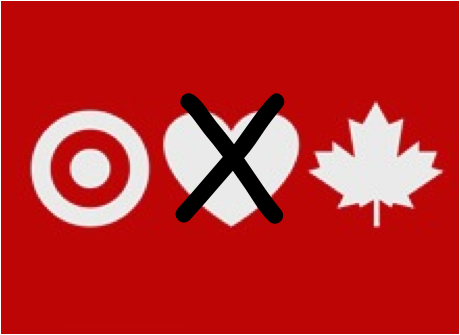 When my wife and I moved back to Canada, one of our big concerns was whether we could survive life without Target as we had gotten quite attached to the store during our years living in the US. It was a great day, especially for my wife, when they announced in 2011 that they were buying leases from Zellers and converting them to Target.
When my wife and I moved back to Canada, one of our big concerns was whether we could survive life without Target as we had gotten quite attached to the store during our years living in the US. It was a great day, especially for my wife, when they announced in 2011 that they were buying leases from Zellers and converting them to Target.
But what started out with such excitement quickly faded to disappointment when the first stores in our area opened in 2013. So while it was surprising when Target announced that they were closing all Canadian stores last week, it was also somewhat expected as it had never lived up to the hype and brand they had created in the US.
While much has already been written about Target Canada’s downfall, I wanted to take a quick look from my personal experiences but also from a marketing perspective. With that frame of reference, here are my 3 key reasons why Target failed.
Poor Selection and Prices
This issue has been well documented in most of the articles I’ve read. Supply chain issues have plagued the company since the start which is actually quite surprising as you would think this is one area that could translate easily from the US to Canada. The reality was that the selection was never very good and definitely a subset of what we saw in the US. And even if you liked some items, they were often out of stock for many sizes or colors.
At the same time, the prices never seemed as good which is a common issue for any store in the Canada. In the US, most weeks we would head to Target to pick up something that was on sale but in here that never really happened. It’s a common reality that things are more expensive in Canada and until that changes, people will continue to go cross-border shopping. In the end, the right products at the right price are absolutely critical, which Target Canada never had.
Brand Inconsistency
I’ve heard both sides of the same coin when it comes to Target Canada. Some people think it was too different from the US stores while others don’t think it was adapted enough to Canada. The reality is that this is not a Canada versus US issue but instead one of brand. The key to a brand is to make a promise to your consumers and make sure you deliver on it.
The Target brand is summed up very nicely in its tagline, “Expect More. Pay Less.” Anyone visiting a Target clearly expects a pleasant shopping experience plus finding different merchandise for the same or only slightly higher prices. And, that’s clearly where Target Canada failed. The promise Canadians thought was going to be delivered to them based on their experience in the US never happened. And once that perception was ruined, it proved impossible to overcome.
Weak Online Presence
I’m surprised that in 2015, the online presence for many companies in Canada is very weak and target.ca is no exception. It looks good but the content is almost non-existent. You can’t even see if they have certain products because all they list is the brands they carry. Compare this to their US site where you can shop online, check to see if something is available, pick-up orders in store, review products, create wish lists and more. Do you think a website for target.ca with even some of these options would have made a difference?
As I said this is not just a Target issue but one I see frequently with Canadian sites. For reasons I just don’t understand, many companies have just not invested in creating a strong online presence in Canada. I would argue that many sites, especially retail ones, are 5 or even 10 year behind where they are in the US. Having a strong online presence, both web and social, are an absolute must today and target.ca didn’t deliver.
There are clearly other reasons that Target failed in Canada and retail experts have written extensively about it and will continue to for the coming years. In fact, I wouldn’t be surprised if this because a major case study in business schools in the US and Canada in the future. It is clearly a major failure by what was a very successful company.
Could Target have succeeded here? I think it could have, and should have, but there were clearly some issues like the ones outlined above that should never have happened in the first place and when they did, it was hard to overcome as you don’t get a second chance to make a good first impression.


Leave a Reply